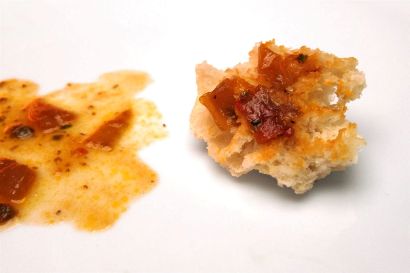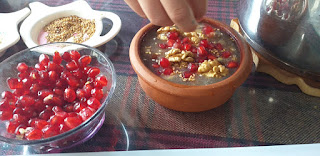IISS Mauro Perrone Castellaneta, Italy, Mr. Roberto Rocco
APULIAN TRADITIONS AROUND THE TABLE
If you are lucky enough to be invited to lunch or dinner by an Apulian person,
never refuse. Anything put on the plate must be accepted and at the end of a
course, especially a pasta course, you have to make the "scarpetta".
The dilemma of the "scarpetta" (little shoe) which is an all-Italian expression
and cannot be translated into other languages, brings back to the greedy
habit of collecting the sauce left on the plate with a piece of bread.
But the etiquette puts a spoke in the wheel, because it is an unprofessional
action. Although many do not give up the shoe to prolong the pleasure of
the dish just eaten. Even the chefs appreciate the gesture of the shoe
because it is a sign of having liked the dish.


Making the shoe is a nice expression that finds its origin in the dialects of southern Italy.
Actually there are two origins: one is a sort of metaphor and compares the
shoe that is worn to the bread that passes on the plate. As the shoe crawls on
the ground and collects what it finds, the same way is done with the morsel of
bread that collects the sauce. The second origin, on the other hand, refers to the
word “scarsetta”, or poverty, which many years ago forced people to be satisfied
with what was there, usually very little and therefore cleaned up the plate because
there was hunger.
And it is rude to get up from the table. You only have to get up when you
have finished eating. Dinner is between 7:30 pm and 9:00 pm, but also
later. Never show up or arrive at the restaurant as early as 6pm.
At 6pm you can have the inevitable aperitif with friends at the bar with
a spritz and some snacks (olives, taralli, peanuts ...)
Last not least, pizza must be eaten with your hands and not with
cutlery, in fact even when an Italian uses cutlery he is asked "Aren't you Italian?"
edited by DOMENICA MANSUETO

















































